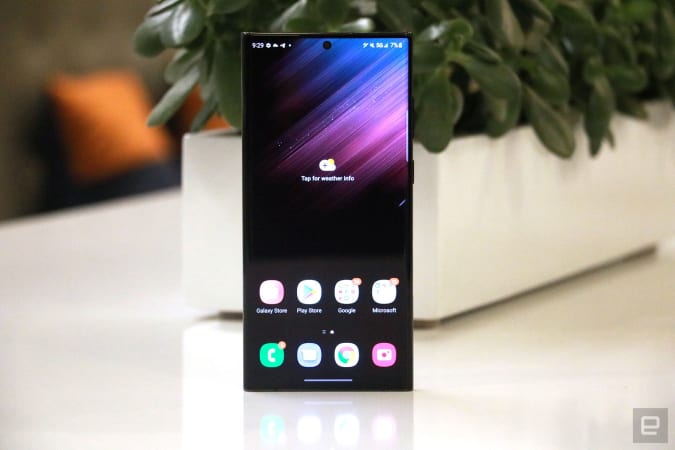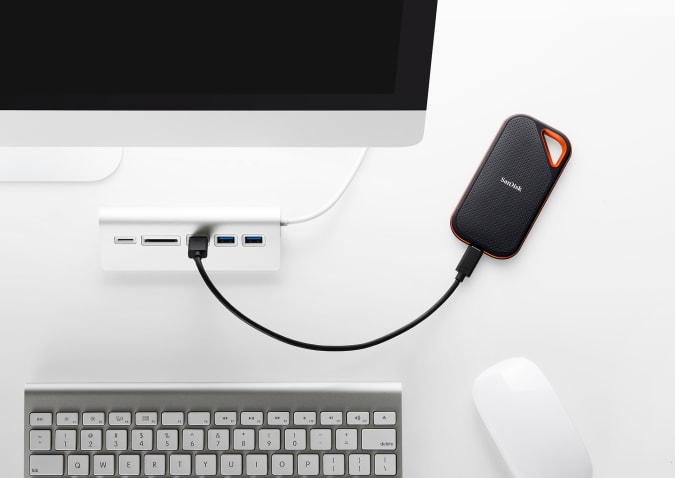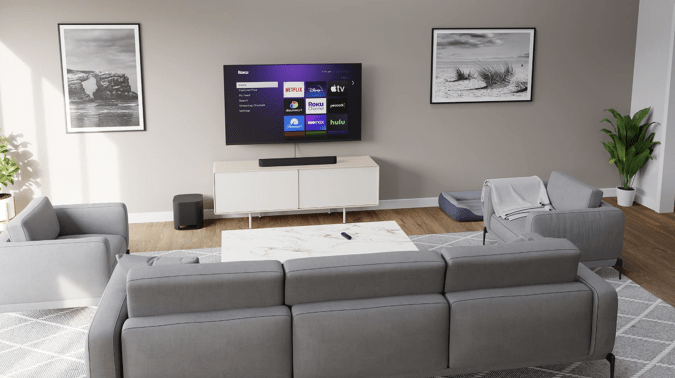The best smart lights you can buy
One of the best places to start when building a smart home ecosystem is smart lights. Not only are they relatively affordable compared to other IoT gadgets, often costing between $10 and $50 a bulb, but they can also completely change the feel of your home. You can go from boring and analogue to colorful and automated within minutes, and there are endless possibilities when it comes to creating funky-colored light scenes, setting schedules and more.
But like the rest of the smart home space over the last few years, there are now more players in smart lighting than ever before. We tested out some of the most popular smart lights on the market and found that most of them are quite good, but there are differences in compatibility, color quality and mobile app usability that are worth considering before deciding which system will be right for your home.
What to look for in smart light bulbs
Connectivity (to hub or not to hub)
One of the biggest appeals of smart lights is being able to control them from your phone. Most of them are able to do so by connecting to it via WiFi or Bluetooth, or via an external hub, which handles the connection for them. Bluetooth connectivity limits the range in which you’ll be able to control the light, so it’s only best for a limited number of bulbs and ones you don’t expect to control when you’re away.
WiFi smart lights are easy to set up and can be cheaper overall since they don’t require a hub to connect them. However, having something like a central Zigbee hub can make your whole system more reliable since its connection is separate from your home’s WiFi network. For that reason, hub-based bulbs tend to be more expandable, so we mainly recommend those if you want to eventually have dozens of smart lights around your home.
White or color?
Most smart bulbs you’ll find today are “white and color” bulbs, meaning they can glow in vibrant blues, pinks, greens and everything in between, as well as shine with different temperatures of white. But there are some white-only bulbs out there, and they are often a bit more affordable than their color counterparts. While we recommend springing for the white-and-color devices, if you’d prefer white only, make sure you’re getting a bulb that can span the temperature spectrum (typically from about 2000 to 5000 Kelvin), offering you various levels of warm and cool white light.
App features
One of the perks of smart lights is the amount of control you have over them thanks to their various app-connected capabilities. Most companion apps let you do things like set lighting schedules, group individual lights into room designations and create your own custom light “scenes” with different colors. But we have seen other features that aren’t as ubiquitous like vacation mode for automatically turning lights on and off to give the illusion that someone is home, and sync with media, which changes the colors of lights depending on the music you’re listening to or the game you’re currently live-streaming.
Smart home compatibility
If you use a virtual assistant like Amazon’s Alexa or the Google Assistant regularly, make sure the smart lights you get work with your favorite. All of the bulbs we tested supported both Amazon’s and Google’s virtual assistants, allowing you to use voice commands to turn lights on and off, dim them and more. The wildcard here is Siri and Apple’s HomeKit; while numerous smart bulbs have added HomeKit to their list of compatible connections, not all lights support Apple’s smart home framework.
Expandability
We alluded to this above, but you’ll want to consider how many smart lights you eventually want in your home. Some brands and systems are easier to expand than others, and we generally recommend going for hub-based bulbs if you plan on putting smart lights in every room in your home. If you’re only looking to deck out your home office or living room with some fancy lights, WiFi options should serve you well. Thankfully, these are some of the most affordable smart home devices you can get, so even if you don’t have a clear answer to this question now, you can reconsider your options down the line if you do decide to outfit your home with dozens of bulbs.
Engadget picks
Best overall: Philips Hue White + Color Ambiance
If you’ve done any research into smart lights, you’ve probably come across Philips Hue bulbs. The range is popular for a variety of reasons, and we agree they’re the best smart lights you can get thanks to their wide compatibility, easy to use mobile app and their expandability. Particularly, if you know you want to outfit more than one room in your home with these IoT devices, Philips Hue is the way to go.
The first thing that’s important to know about Hue bulbs is that they are now Bluetooth enabled. That means you can buy a few to try out first, then easily expand your system with a hub when you want to add more lights to your home. Previously, the hub was required for any and all lights, but now it’s much easier to dip your toe into the range before fully taking the plunge.
Like all of the other smart lights we tested, you only need to screw in a Hue bulb, turn on your light, and follow the instructions in the Philips Hue mobile app to start using it. Even if you only have the lights in one room to start, we still recommend grouping them into their own “room” in the Hue app so you can easily control the entire space’s environment at once.
Hue’s White + Color bulbs provide a range of warm to cool whites and millions of colors to experiment with. Colors are rich and vibrant, and Philips’ pre-programmed scenes, such as Energize, Bright and Relax, let you quickly emulate your old “dumb” lights with different warmth levels of white light. You can pick from a number of color scenes in the app, too, but it’s also easy to create your own. So if you’ve always wanted to flood your office with a rainbow of colors while you’re live-streaming on Twitch, you can find the precise presets you want, save them and then turn them on with just a few taps in the app.
The Hue app is pretty easy to use, and the bulbs support voice commands from Amazon’s Alexa and the Google Assistant. That means you don’t even have to open the app to control your lights; you can simply say “Alexa, turn off the bedroom lights” and only the lights in that designated room will extinguish. You’ll be able to add up to 10 bulbs to your system using Bluetooth alone – at which point you’ll have to add a hub into the mix to support up to 50 lights. The hub also enables things like HomeKit connectivity, light schedules and automations, home and away modes and syncing with movies and music.
Arguably the most useful of those features is automations, which lets you set on/off schedules for your lights, including automatically turning the lights off when you leave the house. It’s understandable why Philips would make these few features exclusive to those with Hue hubs – adding a hub into the mix makes the system more reliable, allowing you to do more with increasing numbers of connected lights, plus it will encourage many to invest in a hub and more Hue bulbs over time. We like Hue’s hub not only for its reliability, but also because it allows finer and more flexible control over your devices. So if you’re on vacation and want to turn on your living room lights to see what’s going on, you can do that.
Expandability goes beyond the number of lights you have in your home: It also includes lights you can install outside, too. The Hue range has a ton of indoor and outdoor bulbs to choose from, including recessed lights, outdoor pedestal and flood lights, light strips and more. It’s one of the few ranges available today that gives you a ton of options to make every bulb in and out of your home smart, which is important to consider if you know you want to go all in on the smart light front.
But that brings us to the biggest downside of Philips Hue, which is the price. Hue bulbs are on the expensive side, with a two-pack of White + Color Ambiance bulbs costing $80. If you’re looking for cheap bulbs to test out smart lighting, some of our other picks below will be better choices since most of them have lower prices per bulb. However, if smart lighting is something you want to invest in going forward, we recommend going with one of Philips’ Hue starter kits: the White + Color Ambiance starter kit, including three bulbs, a hub and a smart button, comes in at $180, which is cheaper than if you were to buy all of those components separately.
Buy White + Color Ambience kit (2 pack) at Amazon - $80Buy White + Color Ambience starter kit at Amazon - $180Runner up: LIFX Color E26
Overall, LIFX’s color smart lights are similar to Hue’s White + Ambiance bulbs in that they’re easy to set up, they offer striking, saturated colors and work with three major platforms:Alexa, Google Assistant and HomeKit. But the main difference is the LIFX bulbs are WiFi only, so you can’t connect them to a hub even if you wanted to, and some are slightly more expensive than Hue devices. The Color E26 bulb, which supports 1100 lumens, normally costs $50, but there’s an 800-lumen equivalent that’s a bit cheaper, coming in at $35 per bulb.
LIFX’s mobile app is also undoubtedly the slickest we tested. While that may not mean much to you, it’s worth mentioning because mobile apps are the way most people interact with their smart lights on a daily basis. The homepage features all of the room groups in your household, along with the names of the lights in each room. You can easily turn a whole room, or a specific light, on with just a tap, and do the same for all of the lights in your home.
LIFX lights support scheduling, so you can program lights to work for you so you rarely (if ever) have to control them manually, plus there are a plethora of scenes and effects to choose from. While all of the color lights we tried had pre-made scenes or presets ready to go in the app, Philips Hue and LIFX clearly had the most out of them all. Personally, I found LIFX’s scenes and additional effects to be a bit more fun and engaging than Hue’s. You can pick from scenes like “spooky” or “pastel” and use effects like “strobe” if you want to make your living room feel a bit more like a nightclub. While most people probably won’t use these niche scenes and effects on a regular basis, they’re great perks to have when you’re entertaining or just want to set the right vibe for your next movie night or game-streaming session.
LIFX has a number of products in its ecosystem, from standard A19 bulbs to lightstrips to candles. It has switches, too, so you can physically control your smart lights if you wish. But Philips Hue has all of those options too and more, including not just switches, but standalone floor lamps, outdoor spotlights, downlights, light bars and motion sensors. You’ll have more options with Hue if you want to convert all of your home’s lights to smart ones, and have multiple ways to control them, too.
Buy LIFX Color E26 at Amazon - $50Best budget: TP-Link Kasa Smart WiFi Light Bulb
TP-Link’s Kasa brand is known for its solid yet affordable smart home devices and its smart lights are no different. We tested out the WiFi-only multicolor smart light bulbs and found them easy to install and use, and they provide a bunch of features at an affordable price; a four-pack of multicolor bulbs will only set you back $40.
Besides having a simple installation process, Kasa’s multicolor smart lights stayed reliably connected the whole time we tested them and the companion mobile app is simple and clean. All of the main functions for each light live in that bulb’s dedicated page in the app, allowing you to change brightness, white levels, color, schedules and more without navigating through a bunch of different menus. Changing colors is nearly instantaneous, and the light changes as you drag your finger across the color wheel in the app. Editing the four presets you’re able to save takes only a few taps, as does grouping multiple bulbs into rooms and creating lighting schedules. For the latter, if you do set on/off schedules, the app will show you the next step in that schedule (i.e., off at 8:35pm) next to each individual light.
There’s also a handy “usage” section in each light’s page that shows you the bulb’s energy use over time, plus an estimate of how much energy you’re saving by using a smart light instead of a regular one. This is something that would be fun to observe over many weeks and months of using these bulbs, especially if conserving energy is one of the main reasons you invested in smart lights in the first place.
TP-Link claims you can connect “unlimited” smart devices to its mobile app, which technically means you can have as many Kasa smart lights in your home as you’d like. We only tested a few together, so we can’t say for sure how dozens of connected devices would affect app speed and light response time. These are WiFi-only bulbs, which means connecting them to a Zigbee hub isn’t an option, so keep that in mind before deciding to invest in a house-full of these gadgets. It’s also worth noting that these lights aren’t compatible with Apple’s HomeKit, although you can control them using Alexa and Google Assistant commands.
Buy Kasa Smart WiFi Light Bulb (4 pack) at Amazon - $40Best all white: LIFX White E26
Maybe you don’t want to bother with colored lights. If that’s the case, LIFX’s White E26 is your best bet. You get all of the non-color features in the mobile app that we explained above, including schedules and virtual assistant controls, but in a more basic light bulb that only costs $10.
My biggest gripe is that it doesn’t span the cool-to-warm temperature range than other bulbs do. Rather, you’re stuck with just one shade of white: 2700K, which is on the warmer side. This makes it better for intimate settings like a bedroom or a living room, but since it’s not overly warm, it could work in a home office, too. It’s also dimmable, so you can control its brightness.
If you have a specific use case in mind for your smart lights that doesn’t involve a rainbow of colors, these bulbs will more than suffice. They would work well in a child’s room, for instance, allowing you to set wake-up and sleep schedules that gradually turn on and off the lights, or in a home office where you just want a bit more control over your lights without extra frills.
Buy LIFX White E26 at Amazon - $10Honorable mention: Sengled Smart Light Bulbs
Sengled’s Smart Light Bulbs deserve a shout because they’re essentially more affordable versions of the best bulbs mentioned here, just with a few compromises. Key among those is that their colors are less nuanced than most others we tested and the mobile app is less polished.
That said, you’re still getting millions of colors out of Sengled’s smart lights and the app is easy to use. It also provides all of the features you’d want from a smart light bulb, including grouping, schedules and automations. The fact that the Sengled mobile app isn’t as slick as Hue’s or LIFX’s may actually work in its favor with newbies – the basic controls and labels will be very easy for smart home novices to understand.
The bulbs we tested were WiFi-based, so they do not require a hub. However, Sengled has a bunch of other smart lights that work via WiFi, Bluetooth or hub connectivity. A pack of four WiFi color bulbs will set you back $30, while a set of six Zigbee hub-based lights costs only $100. Overall, Sengled’s devices are much more affordable than Hue’s, making them a good budget option regardless of whether you want to stick to WiFi or invest in a smart home hub like Sengled’s own or a device like Amazon’s Echo with a built-in hub.
Buy Sengled Smart Light Bulbs (4 pack) at Amazon - $30



